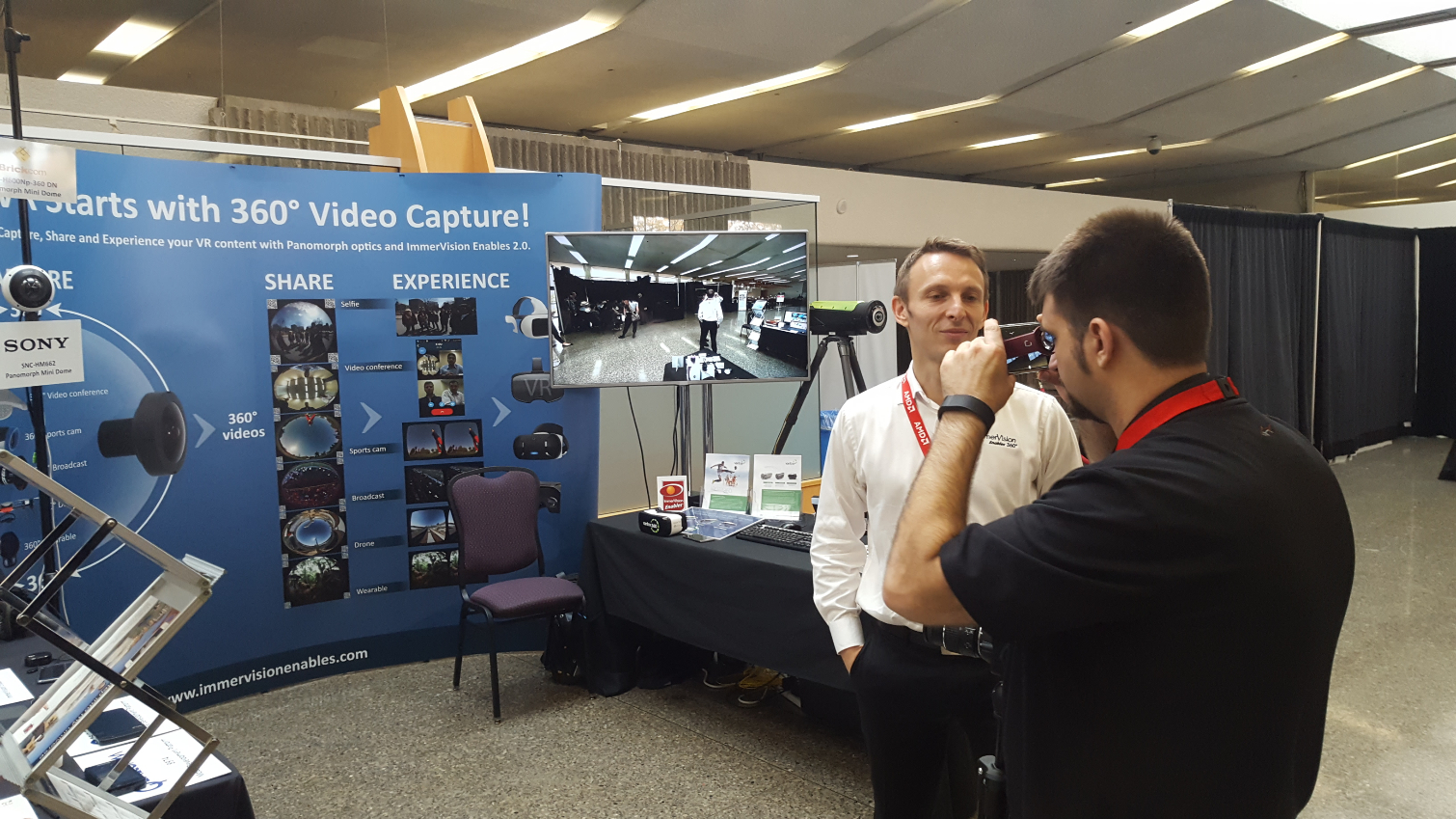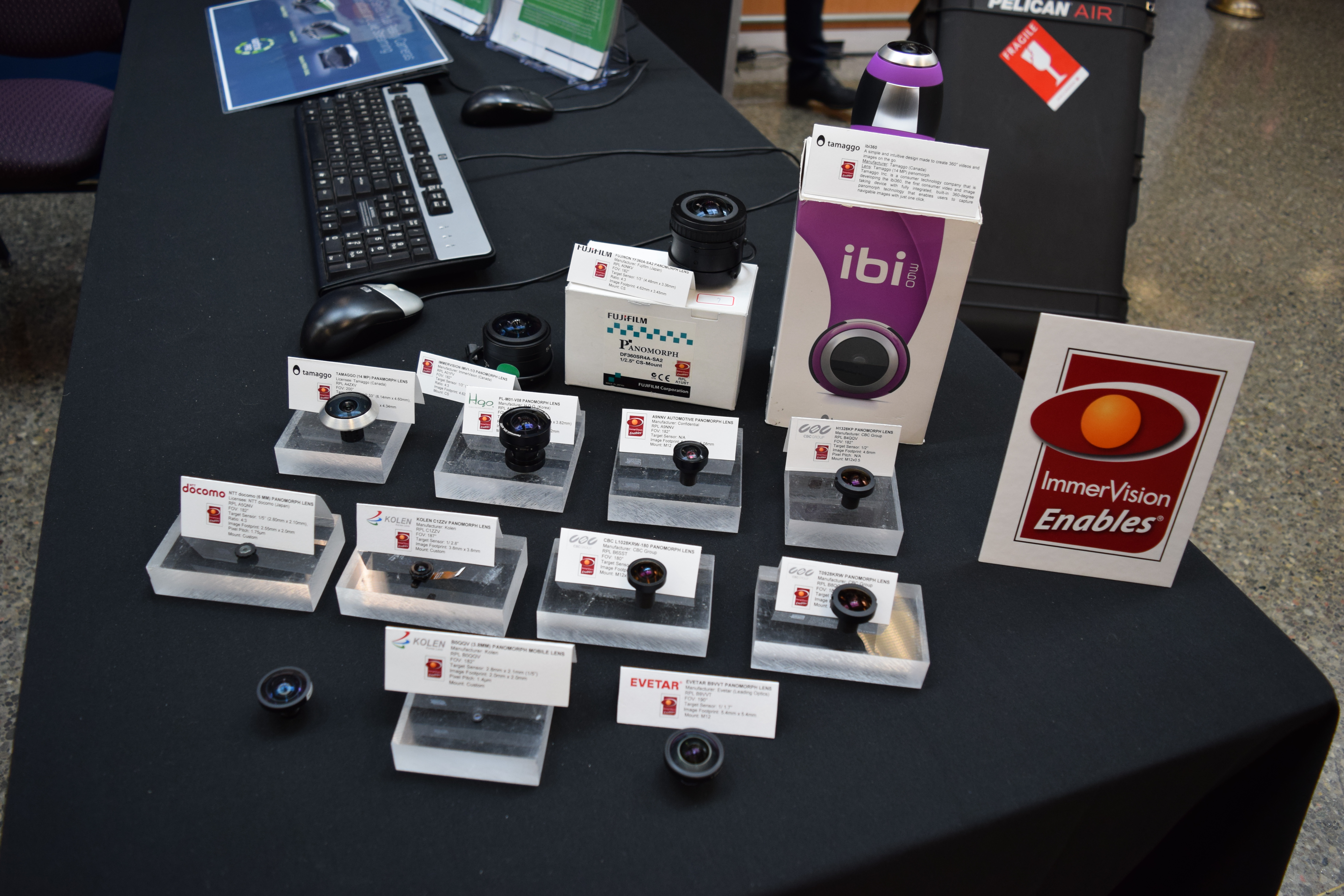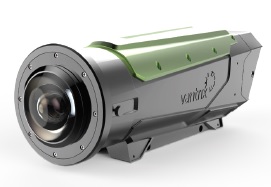ImmerVision Showcased Its Magical Panomorph Camera Technology At Immersed 2016
Immersed 2016 was filled with product showcases and demonstrations from a wide variety of companies. The event had a public showcase in the Ontario Science Center special events hall where you could try one of more than a dozen HTC Vive systems, a couple of large-scale multiplayer virtual reality games, the Vrvana Totem, TReality TBow, along with another half dozen product demos. The public didn’t get to see everything, though. Some of the booths were in the conference area, which was only accessible if you had a full pass for Immersed.
ImmerVision was among the few companies that kept their showcases behind closed doors. The company doesn’t sell directly to consumers, but the products that other companies make that leverage ImmerVision’s technologies could change the way you consume and record immersive video content in the coming months and years.
ImmerVision is a lens design company based in Montreal, QC, Canada that specializes in creating wide-angle 360-degree lenses. The company started its operations 16 years ago, and its primary revenue source is business-to-business (B2B) sales. Until recently, ImmerVision served as a boutique lens designer for industrial applications, such as security cameras, but the company is gearing up to widen its reach into the consumer market. ImmerVision is also going after the broadcast industry, so one way or another, you’ll probably soon be exposed to the company’s handiwork.
ImmerVision had a wide range of its custom lenses on display at Immersed 2016, but when we stopped by, the company was more interested in talking about its partners’ products. We had a chance to speak with Patrice Roulet Fontani, the Director of Technology at ImmerVision and one of the company’s co-founders. Fontani showed us an action camera that is coming out in the next few months that features a 220 x 360 degree lens to capture everything in front and beside you.
These 360-degree action cameras aren’t new. You can find several them on the market, including the Ricoh Theta and the Kodak SP360, but those cameras have fisheye lenses that introduce distortion in the image. ImmerVision’s lenses aren’t fisheyes, so they don’t suffer from the same distortion problem. Furthermore, ImmerVision’s technology goes beyond just lenses. The company’s Panomorph technology can store embedded hidden information about the lens design and almost any other data that the hardware manufacturer desires.
Two of the action cameras that Fontani had on hand offer several interesting capabilities, including data capture sensors such as GPS and G-sensors, which provide the data necessary for sophisticated software-based image stabilization. The sensor data gets embedded in QR codes that record alongside the video, and ImmerVision’s video player software uses that information to deliver a smooth video output.
ImmerVision’s technology also allows you to zoom in and change your vantage point from the zoomed-in perspective. You can even view the content in 360-degree stereo through a VR HMD and look around freely while zoomed. Panomorph technology provides a level of immersion that traditional 360-degree cameras cannot.
Get Tom's Hardware's best news and in-depth reviews, straight to your inbox.
The technology is also being adapted for broadcast television. A company called Vantrix built a broadcast-quality 360-degree camera that features ImmerVision lenses and Panomorph technology. Vantrix already has a 360-degree camera with a 4K sensor available, but the one it brought to the ImmerVision booth features an incredible 5000 x 5000 pixel resolution. The Vantrix PRO25 camera is capable of capturing 5k, 360-degree video with 12-bit color at 240 frames per second—all from a single lens engineered by ImmerVision.
The Vantrix PRO25 offers broadcasters several options. For example, a single camera can produce four simultaneously controlled HD camera feeds. A single camera can also be used to broadcast live 360-degree and VR video that offers unique vantage points for every viewer.
Louis Brun, ImmerVision’s Director of Marketing & Communications, told us that NASCAR recently tested one camera, which 50,000 people connected to, and NASCAR reported that every user picked a unique vantage point. No one settled for the default view. In other words, everyone picked their best seat in the house.
50,000 unique vantage points from one camera is an impressive feat, but imagine if you could choose from multiple cameras. The Vantrix PRO25 is designed to work in conjunction with additional Vantrix PRO25 cameras to provide access to any viewpoint you can imagine. Consider what it would be like to sit next to the goalie of your favorite hockey team, or stand on the goal line when your favorite football player makes a touchdown. ImmerVision’s Panomorph technology opens that possibility, not in a year or two, but now.
Kevin Carbotte is a contributing writer for Tom's Hardware who primarily covers VR and AR hardware. He has been writing for us for more than four years.
-
bit_user ReplyPanomorph technology provides a level of immersion that traditional 360-degree cameras cannot.
I still don't see what it does that others can't replicate. Sure, the lens design might yield less loss of resolution near the edges, but I think video from any 360 lens can be stabilized.
Personally, I'm much more interested in Lytro's 360 degree cameras. -
kcarbotte Reply18803378 said:Panomorph technology provides a level of immersion that traditional 360-degree cameras cannot.
I still don't see what it does that others can't replicate. Sure, the lens design might yield less loss of resolution near the edges, but I think video from any 360 lens can be stabilized.
Personally, I'm much more interested in Lytro's 360 degree cameras.
I was too, but Lytro's technology isn't available yet and we don't know when it will be. Immervision's tech is ready to deploy now.



